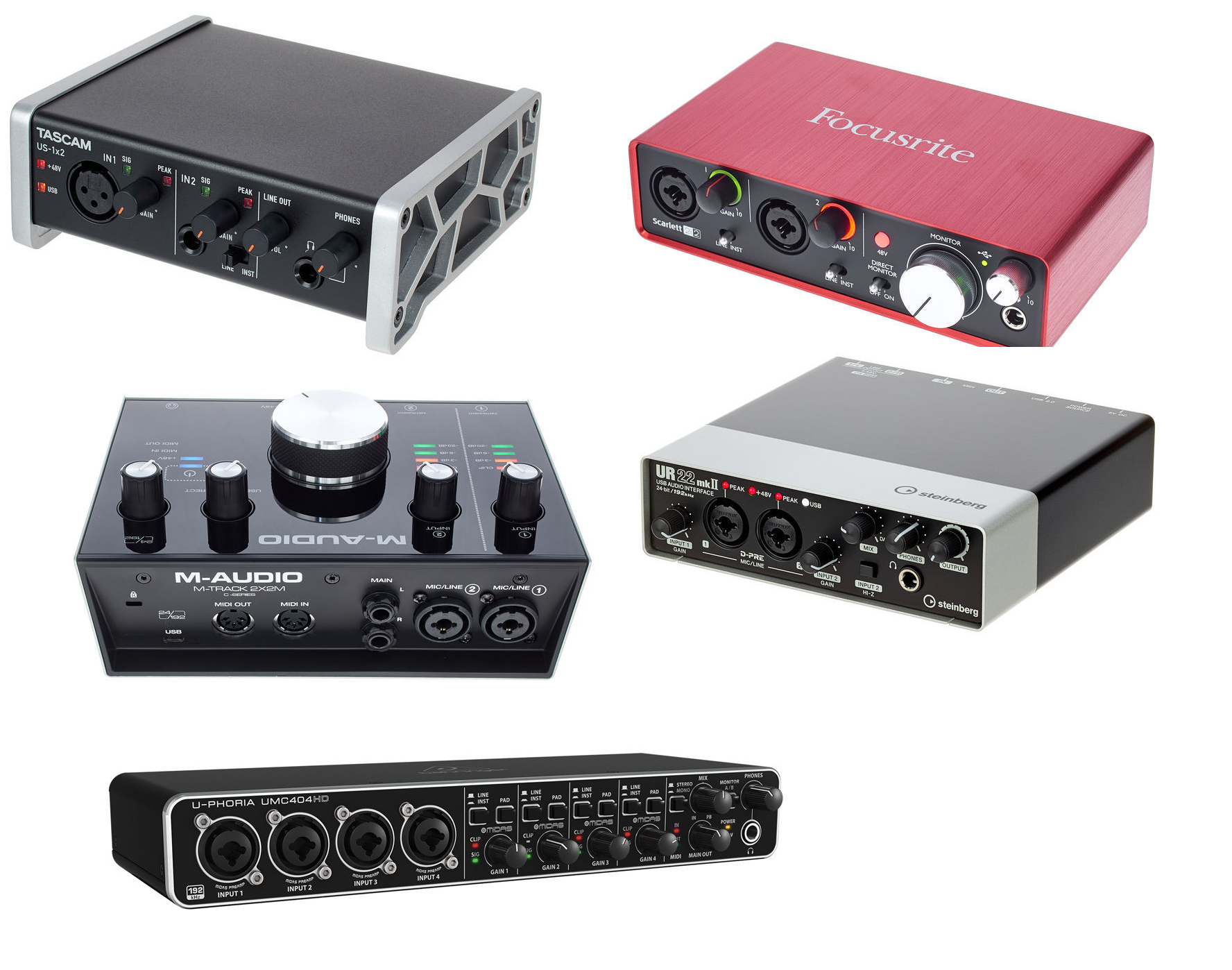I heard voices saying, that they don't have a microphone input with phantom power at hand in order to play an AnyMic/i or use any other AnyMic device like AnyMic/1 and/or AnyMic/4 ...
Well ... nearly nothing is easier than getting a reasonable microphone input ...
There are many of so-called 'audio-interfaces' on the market.
Most people think these 'audio-interfaces' only work with a computer attached but do not realize, that these devices are constructed as '1st-level-mixers' and can be used even if no computer is connected.
Most of these auto-interfaces have 1 to 4 'combi sockets' on the input side to connect instruments to the 1 to 4 input channels they provide; i.e either 1/4-Inch telephone jack (TRS) or XLR for microphone cables can be connected. So their input side is pretty flexible for any kind of instrument connector.
The interesting viewpoint is the output side ...

Nearly all audio-interfaces have separate 1/4-inch (TRS; 6,35mm) output sockets on the rear for two mono channels (1/L, 2/R) that provide a stereo output if used combined. Each output then can be connected where ever you like or need it for further sound processing.
For a good decision the following features should be available:
- At least 2 input channels on combi-sockets (TRS & XLR in one connector unit)
- 2 Outputs to TRS (1/4-inch jacks), optionally XLR outputs
- Phantom-power for all XLR inputs
- Dual-powering by power-supply and USB-powering
A 'single channel' device makes only sense if size or price really matters. But these devices are really restricted.
Some other devices have only RCA (cinch) outputs and should be excluded from the decision, since these outputs cannot connect with 'musician cables' directly and need adapters.
My absolute recommendation among all these audio-interfaces on the market is the
Behringer "Uphoria" UMC 404HD
This device is unbelievable ...
- 4 separate input channels with high-class MIDAS microphone pre-amplifiers
- Output to two 1/4-inch jacks and XLR (L/R; stereo)
- Insert sockets for every input to loop-in effect chains (pedal chains) for each input separately
(You rarely find this - even in the high-price segment ... ) - Either power-supply or USB powering
- ... and not to forget ...
It is an audio-interface on top to do digital recording, effect processing and digital mixing if a computer is connected. With 24Bit/192Khz sampling rate on the digital interface with the computer it really represents contemporary state-of-the-art technology.
After all, a breath-taking street-price of 105 EUR (~100 USD in the US) makes it a real bargain.

Since the Behringer UMC 404HD is a 4-channel device it is capable of ...
Cool trick #2 ...
This can extend your inputs on an acoustic amp, if one of the 1/4-inch outputs on the UMC-404HD is plugged into the jack input on the acoustic amp. By doing this you get two universal inputs (by the combi-sockets on the audio-interface) with separate volume controls and other controls that a channel on the UMC-404HD provides.
The Behringer UMC-404HD bundles inputs "1&3" as well as inputs "2&4" to one of the outputs 1/L and 2/R respectively. So two of the inputs on the UMC-404HD can share the jack input on your acoustic amp - which extends the input capabilities of your acoustic amp.
Is that all??
No ... there is Cool Trick #3 ...
By the 'Mono' button on the UMC-404HD all 4 inputs are equaly mixed down to both outputs. So the acoustic amp can be extended on it's jack input to the 4 inputs coming from the UMC-404HD with universal input sockets to connect any device. This way you have four pre-mixed instruments coming from the UMC-404HD that are consuming just a single input at your acoustic amp. The other inputs on the acoustic amp are still available for another purpose ...

